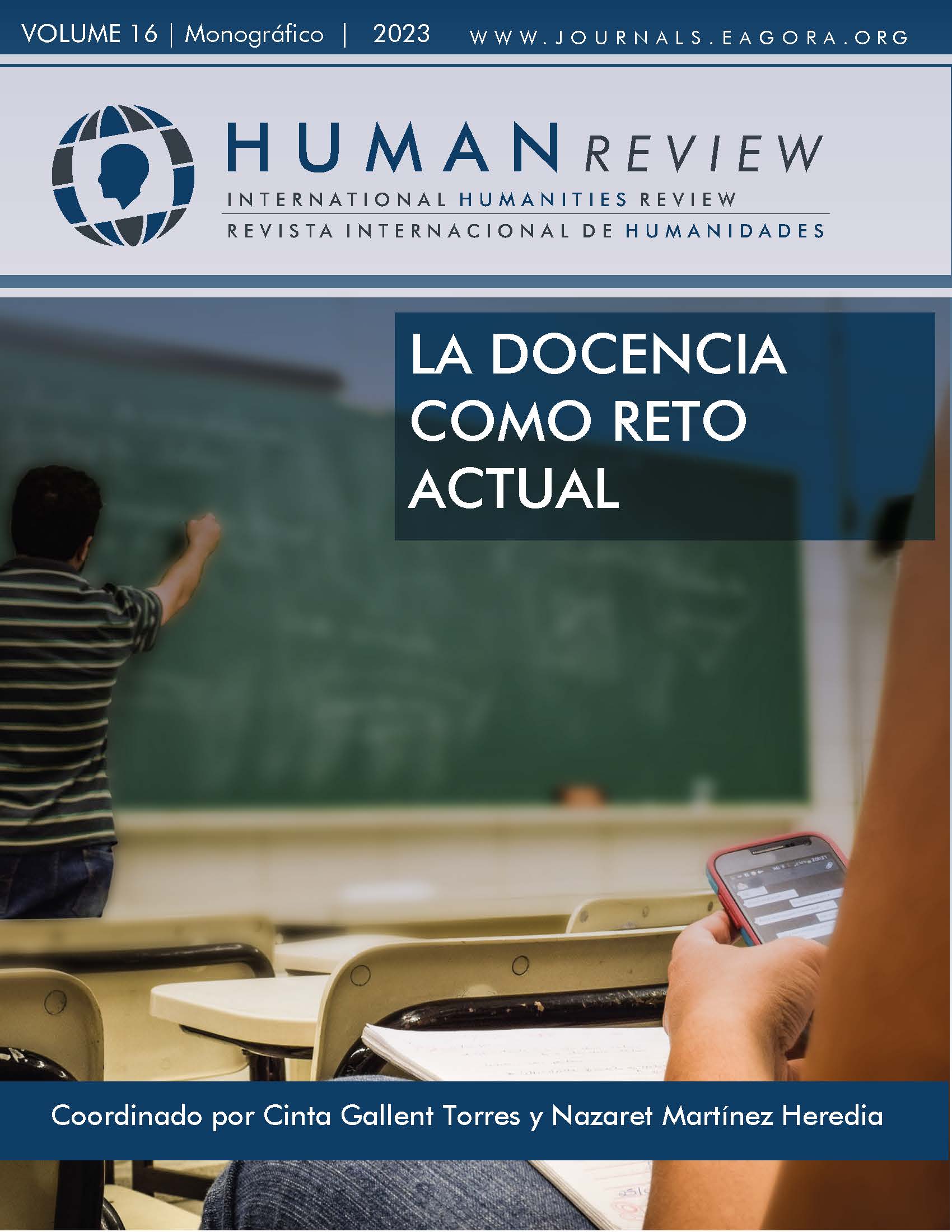La simulación: nueva herramienta de aprendizaje en los estudiantes de medicina
DOI:
https://doi.org/10.37467/revhuman.v12.4673Palabras clave:
Docencia, Estudiante, Habilidades no técnicas, Simulación, AeroevacuaciónResumen
El objetivo principal del estudio es establecer una nueva estrategia docente en el aprendizaje de las habilidades no técnicas en los estudiantes de medicina mediante la simulación en un entorno real. Para ello, utilizamos un escenario real: la Unidad Médica de Aeroevacuación (UMAER) situada en la Base Aérea de Torrejón (Madrid), donde los estudiantes de medicina de la Universidad Complutense de Madrid realizaron la simulación de aerotransporte de pacientes críticos en un entorno bélico real. Los resultados del presente trabajo muestran la eficacia de la simulación en el aprendizaje de las habilidades no técnicas en los estudiantes de medicina.
Citas
Aebersold, M. (2016). The History of Simulation and Its Impact on the Future. AACN Adv Crit Care, 27(1), 56-61. doi: 10.4037/aacnacc2016436
Carretero-Díaz, M. A. y Barrientos-Báez, A. (2019). Necesidad de formar a los cuidadores de personas en situación de dependencia: comunicación y respuesta desde la UCM. Revista de Comunicación y Salud, 9(1), 19-38. http://doi.org/10.35669/revistadecomunicacionysalud.2019.9(1).19-38
De La Cruz Sánchez, E. E., Poma Henestroza, S. L. y Suárez-Calixto, R. (2022). La educación alimentaria y nutricional en la formación docente. Dos visiones, dos universidades, dos países y un compromiso: Perú-Venezuela. Revista de Comunicación Y Salud, 12, 21-44. https://doi.org/10.35669/rcys.2022.12.e273
Decker, S., Sportsman, S., Puetz, L., & Billings, L. (2008). The evolution of simulation and its contribution to competency. J Contin Educ Nurs, 39(2), 74-80. http://doi.org/10.3928/00220124-20080201-06
Feldman, M., Edwards, CH., Wong, A., Randolph, J., Woleben, CH., Nguyen, A., Grossman, C. (2022). The Role for Simulation in Professional Identity Formation in Medical Students. Simul Healthc, 17(1), e8-e13. http://doi.org/10.1097/SIH.0000000000000583
Ferguson, J., Astbury, J., Willis, S., Silverthorne, J., & Schafheutle, E. (2019) Implementing, embedding and sustaining simulation-based education: What helps, what hinders. Med Educ, 54(10), 915-924. http://doi.org/10.1111/medu.14182
Galo, Z. (2015). La Unidad Médica de Aeroevacuación Sanid Mil, 71(4), 223
González, C., Cantalejo, F., Couceiro de Miguel, J., Sanchez, G., Seguido, R., Martinez, I., & Chillon, MJ. (2016). Aeroevacuación médica táctica y estratégica de la fuerza desplegada en Afganistán. Sanid Mil, 72(3), 227-232
Goolsby, C., & Deering, S. (2013) . Hybrid simulation during military medical student field training--a novel curriculum. Mil Med, 178(7), 742-745. http://doi.org/10.7205/MILMED-D-12-00541
Kalaniti, K., & Campbell, DM. (2015). Simulation-based medical education: time for a pedagogical shift. Simulation-based medical education: time for a pedagogical shift. Indian Pediatr, 52(1), 41-45. http://doi.org/10.1007/s13312-015-0565-6
Lake CL. (2005). Simulation in cardiothoracic and vascular anesthesia education: tool or toy?. Semin Cardiothorac Vasc Anesth, 9(4), 265-273. http://doi.org/10.1177/108925320500900401
Madsgaard, A., Smith-Strøm, H., Hunskår, I., & Røykenes, K. (2022). A rollercoaster of emotions: An integrative review of emotions and its impact on health professional students‘ learning in simulation-based education. Nurs Open, 9(1), 108-121. http://doi.org/10.1002/nop2.1100
McLaughlin, S., Fitch, M.T., Goyal, D.G., Hayden, E., Kauh, C.Y., Laack, T.A., Nowicki, T., Okuda, Y., Palm, K., Pozner, C.N., Vozenilek, J., Wang, E., Gordon, J.A., & SAEM Technology in Medical Education Committee and the Simulation Interest Group. (2008). Simulation in graduate medical education 2008: a review for emergency medicine. Acad Emerg Med, 15(11), 1117-1129. http://doi.org/10.1111/j.1553-2712.2008.00188.x
Okuda, Y., Bryson, E.O., DeMaria, S. Jr., Jacobson, L., Quinones, J., Shen B., & Levine A.I. (2009). The utility of simulation in medical education: what is the evidence?. Mt Sinai J Med, 76(4), 330-343. http://doi.org/10.1002/msj.20127
Pajor, M., Xie, N., & Podolej, G. (2022). Medical student education simulation competitions. Clin Teach, e13547. http://doi.org/10.1111/tct.13547
Peng, P., Su, N., Hou, R., Geng, H., Cai1, F., Zhong, W., Zhang, W., Zhong, J., Yang, Z., & Weiling C. (2022). Evaluation of teaching effect of first-aid comprehensive simulation-based education in clinical medical students. Front Public Health, 10, 909889. http://doi.org/10.3389/fpubh.2022.909889
Ross, B.K., & Metzner, J. (2015). Simulation for Maintenance of Certification. Surg Clin North Am, 95(4), 893-905. http://doi.org/10.1016/j.suc.2015.04.010
Descargas
Publicado
Cómo citar
Número
Sección
Licencia
Aquellos autores/as que publiquen con esta revista, aceptan los términos siguientes:
- Los autores/as conservarán los derechos morales sobre la obra y cederán a la revista los derechos comerciales.
- Transcurrido 1 año desde su publicación, la versión del editor pasará a estar en acceso abierto en la web de la editorial, pero la revista mantendrá el copyright de la obra.
- En el caso de que los autores deseen asignar una licencia abierta Creative Commons (CC), podrán solicitarla escribiendo a publishing@eagora.org.








